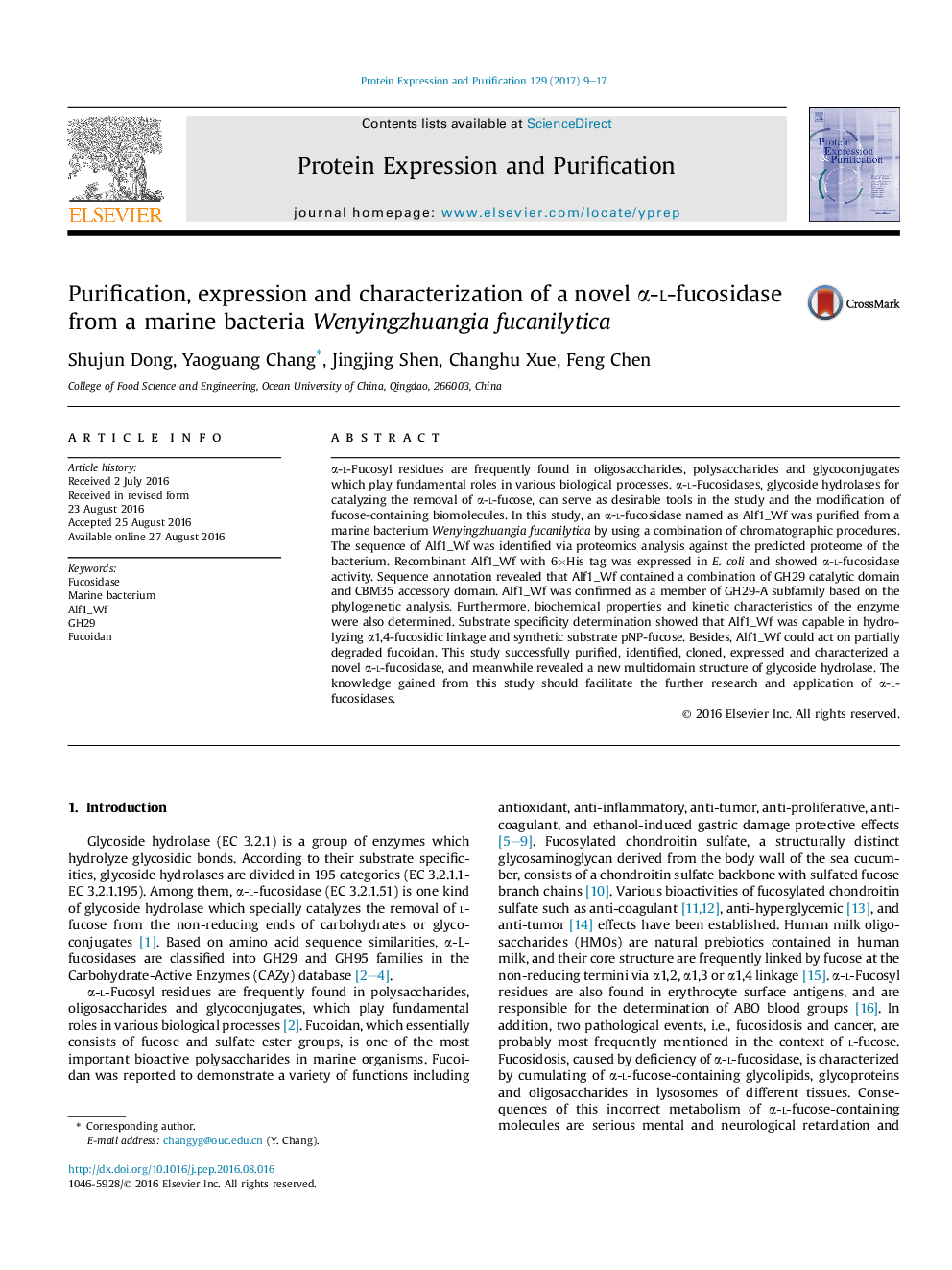| کد مقاله | کد نشریه | سال انتشار | مقاله انگلیسی | نسخه تمام متن |
|---|---|---|---|---|
| 5516160 | 1542312 | 2017 | 9 صفحه PDF | دانلود رایگان |

- A new α-l-fucosidase (Alf1_Wf) was purified from marine bacterium W. fucanilytica.
- Alf1_Wf was successfully expressed in E. coli and annotated as a GH29-A fucosidase.
- It was the first reported GH29-A bacterial fucosidase containing CBM domain.
- Alf1_Wf can act on pNP-fucose and slightly on α1,4-fucosidic linkage.
- It fails to degrade the fucoidan polysaccharide but can hydrolyze fucoidan fragment.
α-l-Fucosyl residues are frequently found in oligosaccharides, polysaccharides and glycoconjugates which play fundamental roles in various biological processes. α-l-Fucosidases, glycoside hydrolases for catalyzing the removal of α-l-fucose, can serve as desirable tools in the study and the modification of fucose-containing biomolecules. In this study, an α-l-fucosidase named as Alf1_Wf was purified from a marine bacterium Wenyingzhuangia fucanilytica by using a combination of chromatographic procedures. The sequence of Alf1_Wf was identified via proteomics analysis against the predicted proteome of the bacterium. Recombinant Alf1_Wf with 6ÃHis tag was expressed in E. coli and showed α-l-fucosidase activity. Sequence annotation revealed that Alf1_Wf contained a combination of GH29 catalytic domain and CBM35 accessory domain. Alf1_Wf was confirmed as a member of GH29-A subfamily based on the phylogenetic analysis. Furthermore, biochemical properties and kinetic characteristics of the enzyme were also determined. Substrate specificity determination showed that Alf1_Wf was capable in hydrolyzing α1,4-fucosidic linkage and synthetic substrate pNP-fucose. Besides, Alf1_Wf could act on partially degraded fucoidan. This study successfully purified, identified, cloned, expressed and characterized a novel α-l-fucosidase, and meanwhile revealed a new multidomain structure of glycoside hydrolase. The knowledge gained from this study should facilitate the further research and application of α-l-fucosidases.
Journal: Protein Expression and Purification - Volume 129, January 2017, Pages 9-17